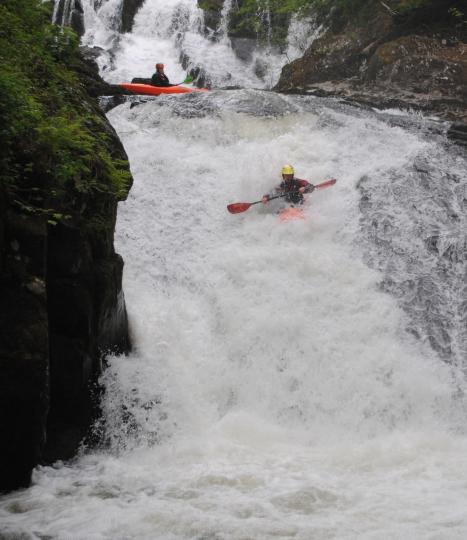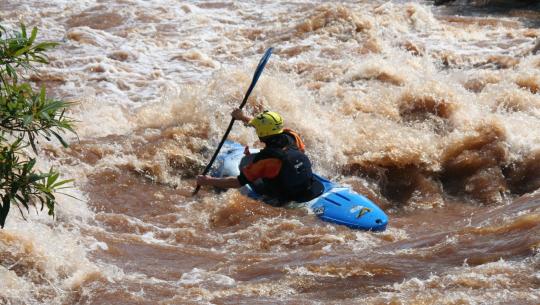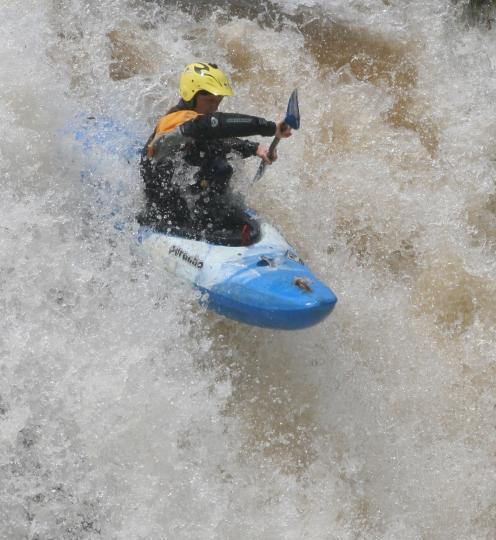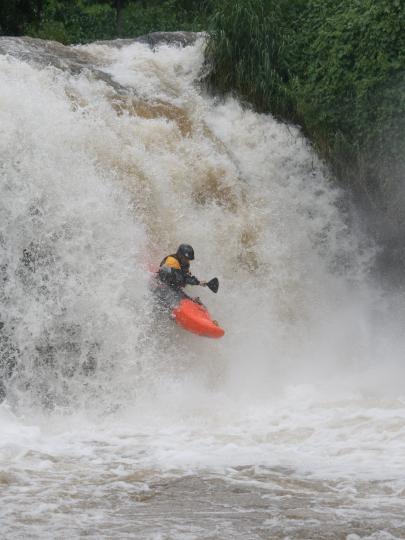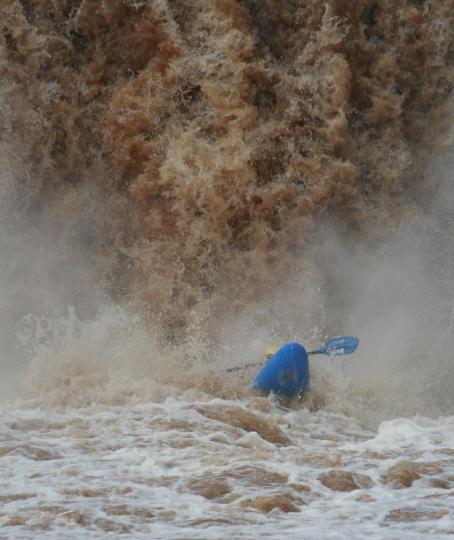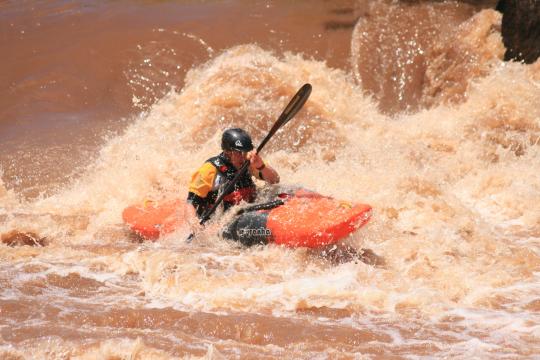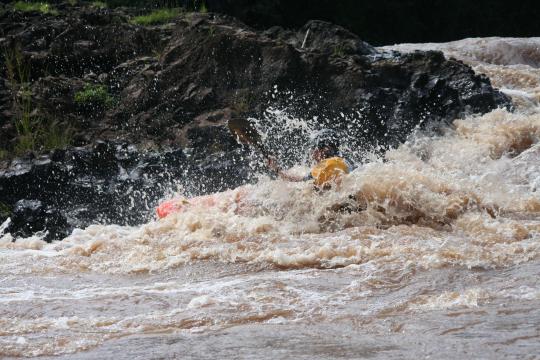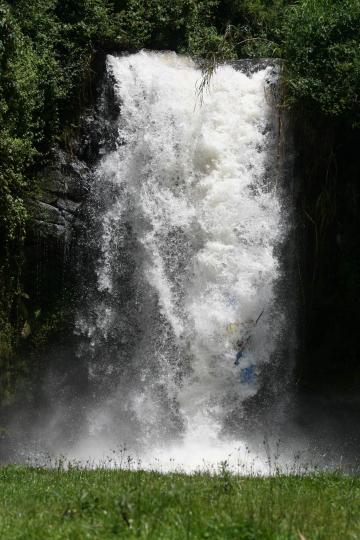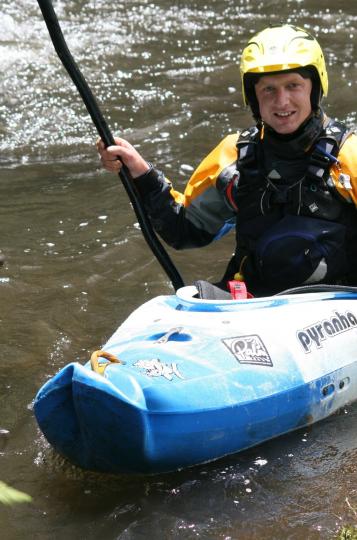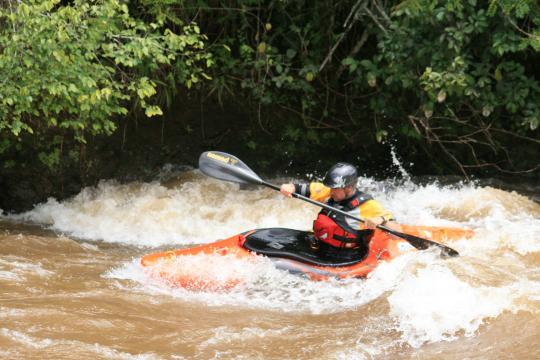As a committed long-term addict to the Burn / Everest series of boats I had mixed feelings when I heard that Pyranha were developing a new large boat.
These feelings were compounded when I paddled the first prototype in North Wales, the boat just didn’t feel right, more like a creek boat from a decade ago, something you fall down the river in, rather than cruise downriver in.
After several more mutations, and much head scratching by the top draw design team, Pyranha released a finished boat, the Shiva.
Well, as they say, you can’t judge a performance from one observation, so when the opportunity came up to have a Shiva for our expedition to Kenya (http://belowandbeyondmountkenya11.wordpress.com) I thought long and hard about if I wanted to take such an unknown quality on a exploratory kayaking trip, but when the design team said that they were sure they’d cracked the flaws in the prototypes I committed. It turned out to be the best decision I’d made for a long time.
Now the boat itself is very different in many ways from the Burn / Everest (hereafter just called the Burn), both in handling on the water, and the paddling style required. It also goes without saying that they will each excel in different branches of our sport. Here are some of my thoughts about the differences in the boats, and their application.
Speed – The Shiva accelerates really well, and holds its speed through the rapids. This is excellent when on rivers that require speed to move past obstacles, but at the sacrifice of positioning when the rapids are long and continuous. The lack of rails does lead to some loss of speed when carving turns, especially into those must make eddies.
Tracking – When the water starts to shove your boat around and there are flows coming from various angles, then the Burn’s front rails engage and stop it from being pushed about. The Shiva needs more aggression and drive from the paddler to stop this from happening.
Boofing – Both craft lift well, but for me the sitting position in the Shiva, with your knees closer together, made a large difference to how easy the boat was to boof. This connectivity works well on the lower volume runs, but doesn’t give the all day comfort of the Burn.
Rolling – To be completely frank, both boats roll. They both have decks you can get close to for ease of initiation, and the volume to help the roll as you come up.
Resurfacing – The Shiva resurfaces in a poised and balanced manner, especially when you plug into a deep pool. When on bigger volume with crashing waves, the Burns shaped deck profile defiantly helps to shed the water faster, and leaves the paddler in more control.
Stability – The Burn’s flat hull gives a more stable platform without the paddler’s input, but when the Shiva is being driven aggressively it gives an inspiring ride. The rounder hull profile means that when that unexpected rock is hit it is less tippy than the Burn (this is especially apparent on rocky slides!).
Safety – Both have the same great pedigree, and having tested the inbuilt safety design features of the boat out fully, I can honestly say I wouldn’t want to piton 45 feet onto rock again without the built in crumple zone, or the full plate footrest with shock absorbing bars. I’m convinced that if I had been in a less thought out design then serious damage may have occurred (to me that is, the boat was pretty bad…).
Surfing – The Burn excels at surfing and carving around on river waves; the planning hull makes a huge difference here. The Shiva is a harder craft to control whilst playing on these features.
To summarise, while coming from the same pedigree, each boat fulfils different requirements, and I certainly won’t be retiring my Burn anytime soon. If I were off for a trip to the Alps, Himalaya or other big volume paddling destination then I’d pack the Burn, for it’s ability to track through long rapids, keep speed through carving turns and fun surfing waves. I would pack the Shiva for a US steep creeking trip (California or BC), or for the lower volume runs in the Italian and Swiss Alps, for the ease of boofing and resurfacing, and acceleration.
As a more generalise summary, The Shiva rewards a more aggressive paddling style, being driven from it’s bow, and feels more at home on lower volume rivers, while the Burn is a more enjoyable paddle on voluminous and continuous rivers. My largest dilemma at the moment is which boat to choose for British paddling in 2012.
I hope this has give you some thoughts as to the differences of the boats, go out and demo each of them, and decide which you prefer for your paddling style.
Have fun, stay safe & above all, don’t run waterfalls into pools of dubious depths.
Dan




